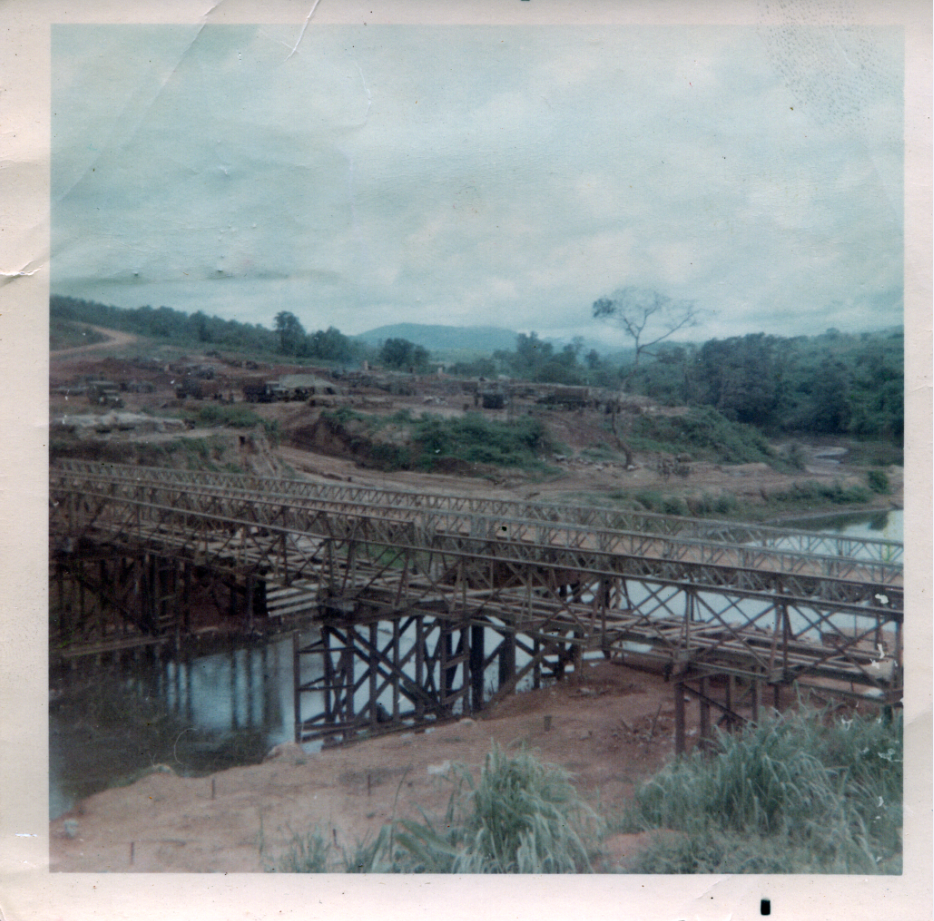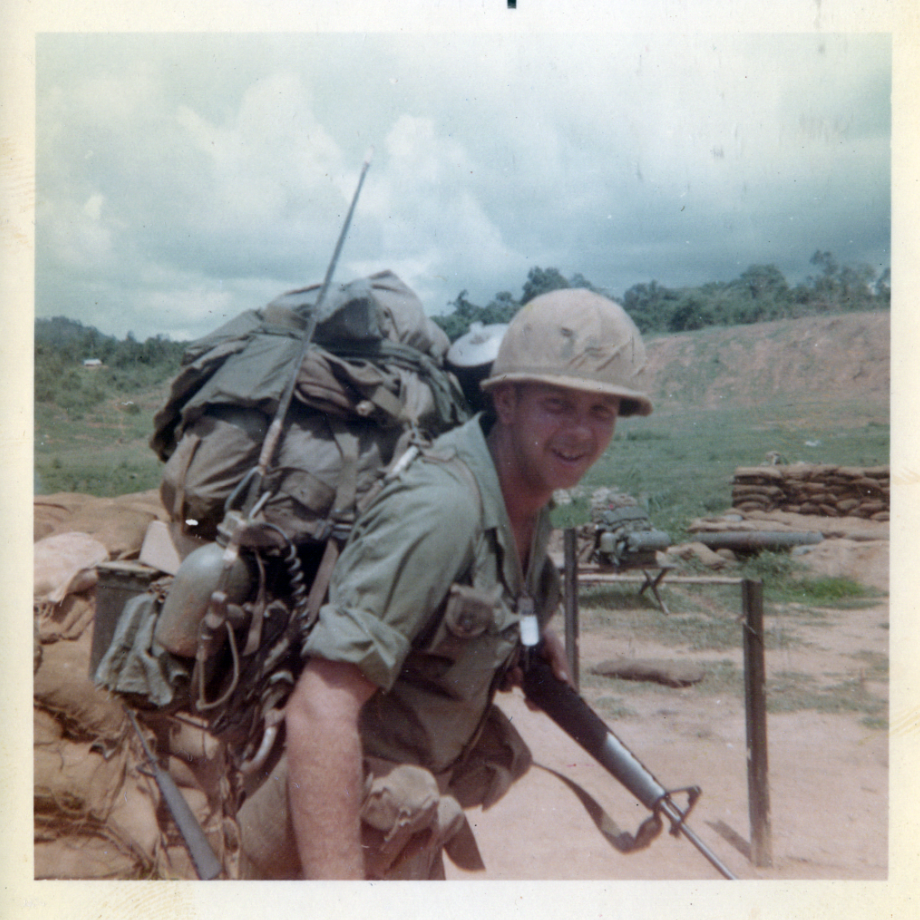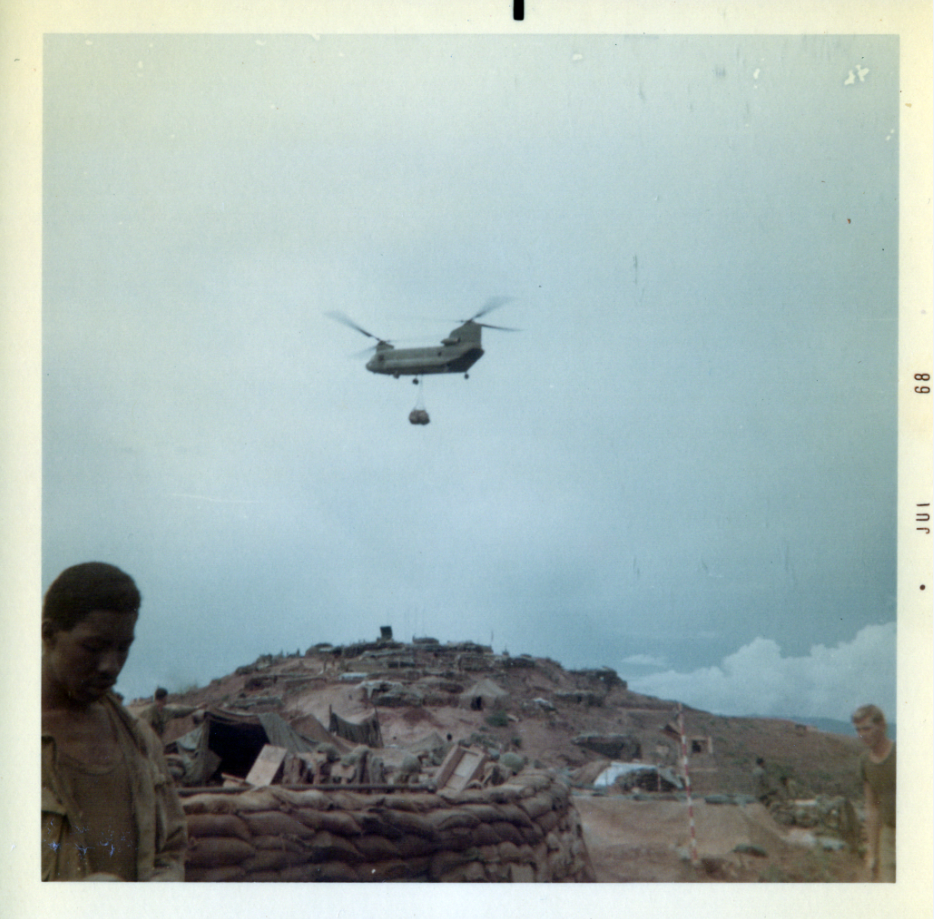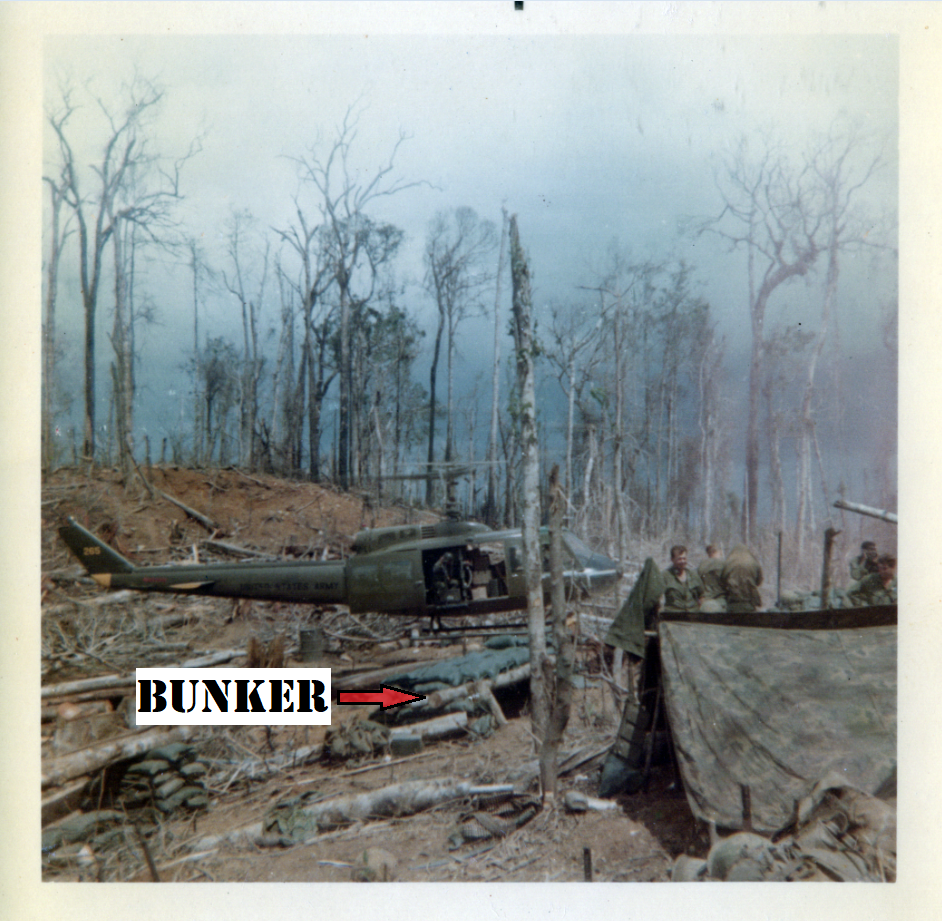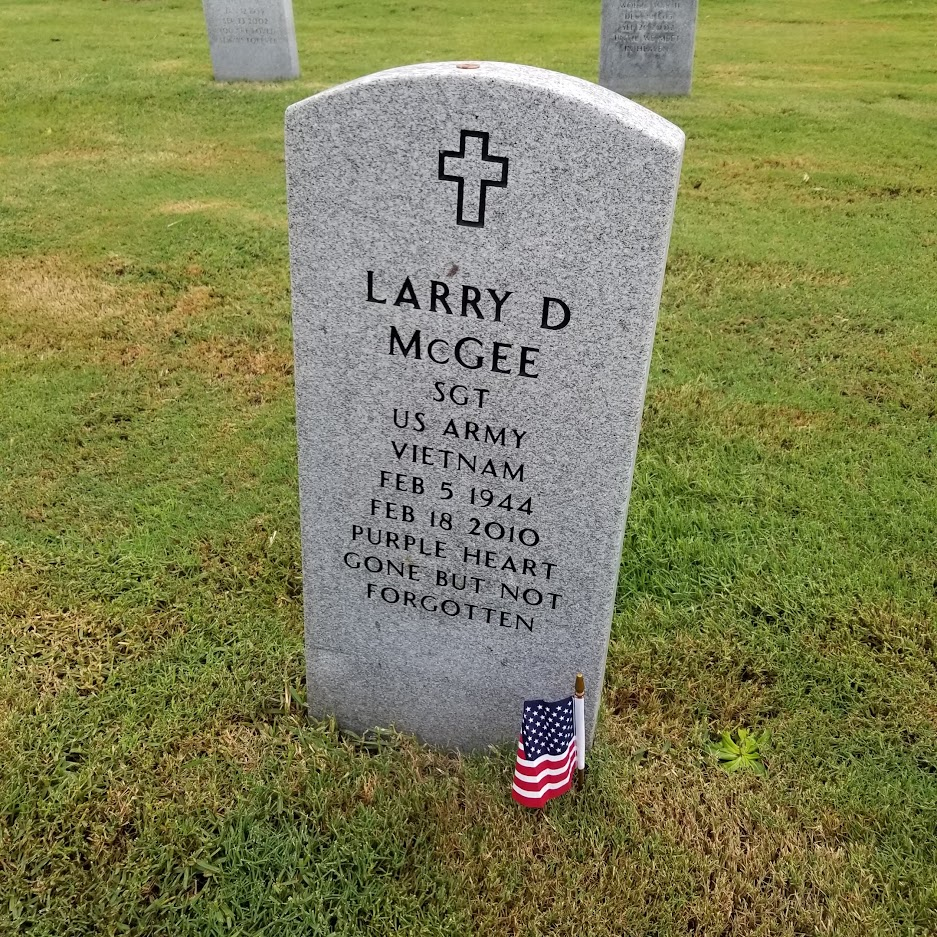Back in October of 2020, my 9 year old son Micah and I flew to Texas and began an amazing 10 day road trip throughout the state. We met some really amazing people, including Shannon Houdek. Shannon’s dad Larry “Mac” McGee was the Delta Company, 3-12 Infantry forward supply sergeant in Dak To, Vietnam from January through May of 1968. My wife’s uncle Donald was a platoon medic in D Co at the same time. Now we don’t know for sure if he and “Uncle” Donald ever interacted, but I’m guessing that they did, even if briefly. I like to imagine at some point Donald needed something, maybe a pick handle, or a shovel…”Go see Mac, he’ll take care of you.” Most guys that served in D Co at that time remember Mac, as he played an important role when it came to keeping D Co supplied with the ammo, weapons, radios, batteries, uniforms, tools and other misc. items that were in near constant demand.
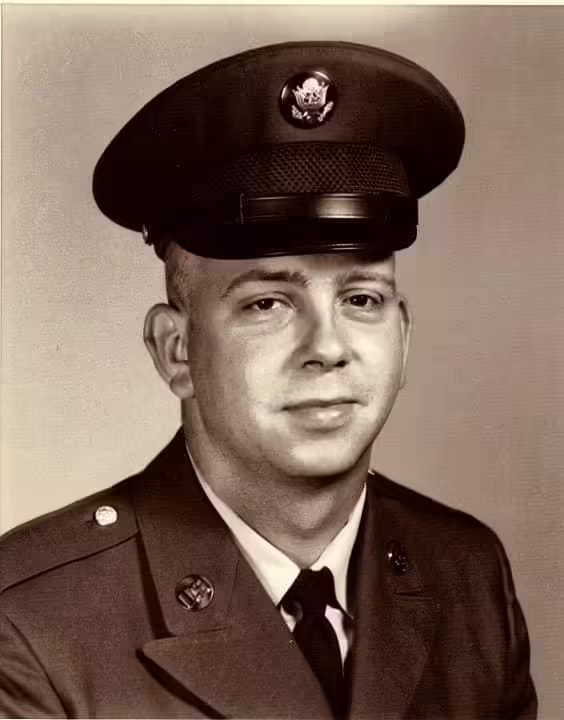
Mac didn’t start his tour as a supply guy, nor did he end it as one. He was drafted out of his home state of Texas in mid 1967, and attended infantry Basic and Advanced Training at Ft Polk, Louisiana. He was trained as a mortarman, but when he arrived in Vietnam and was assigned to Delta Company, 3-12 in late September 1967, he was handed a handset along with his M-16, and became the radio operator for his platoon sergeant. Mac would pack the 23.5 lb. PRC/25 field radio on his back, its long antenna extended, marking him and the platoon sergeant he supported as targets of opportunity for enemy marksmen.. The radio and batteries, along with all the normal items a rifleman might carry, put his pack somewhere near the 100 lb. mark.
Mac spent October of 1967 learning the ropes of being an infantryman in the Central Highlands of Vietnam. Day after day of “humping” the hills and jungles south and west of Dak To. In a letter home to his mother dated October 23rd he puts it this way, “There’s not much to say you already know what it’s like here. Plain miserable that’s what it is.”
Mac had no way of knowing, but November of 1967 would only increase the amount of misery he would experience. On November 8th, Delta and Charlie Companies would be airlifted and inserted into the Ngok Kong Kring, a spinelike mountain complex located just kilometers south of Dak To. Their mission was to push west along a skinny ridgeline and clear the North Vietnamese positions on Hills 1124 and 1089. By 0710 hours on the 9th, the units were in contact and the first casualties recorded. The American infantry units would advance, clearing bunkers and spider holes as they went. The NVA would withdraw, and then establish a new line of defense, peppering the oncoming GIs with mortar rounds, rockets, small arms and automatic weapons fire. Snipers were a menace. On November 9th, three men from Charlie Company were killed, along with over a dozen wounded severely enough to need to be evacuated.
The intensity of the fighting only increased on the 10th and 11th. Delta Company, with Mac right in the middle of it, pushed up the slopes of Hill 1089, gaining ground but paying a dear price for it. More men fell. Charlie Company lost another two men KIA, Delta suffered four. One of them, PFC Norman J Livingston from Detroit, Michigan, had arrived in Vietnam within days of Mac. Less than 50 days into his 365 day tour, Livingston was killed by small arms fire at some point on November 11th.
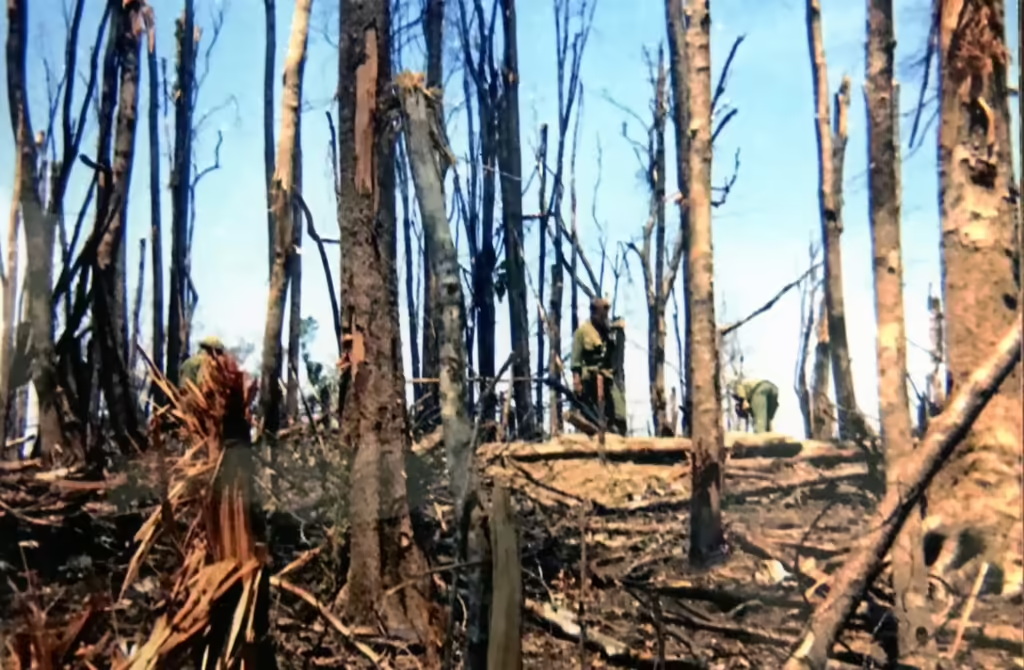
Mac would not escape the 11th unscathed. Radio Operators were a desired target of NVA and VC snipers, and on this day, one of them would set his sights on Mac. As Mac and his platoon sergeant made their way up the hillside, they remained within arms reach of each other. At one point, Mac handed his radio handset to the sergeant, the rubber cord attached to the handset stretched between the two men. The sergeant finished making his radio call, placed the handset back in Mac’s right hand, told him to call in their coordinates and then moved a few feet away. Mac, placing the handset to his ear, mashed the call button with his middle finger and sent the coordinates. Just as he released the button on the handset, a sniper’s shot rang out, no doubt aimed for Mac’s head. The sniper’s aim was off, and shot off Mac’s middle finger above the knuckle instead. Although minor compared to many of the other wounds being suffered that day, it took Mac out of the fight. The pain was intense, and after receiving some morphine, he remarked that “the pain wasn’t gone…but it was WAYYYYY over there”.
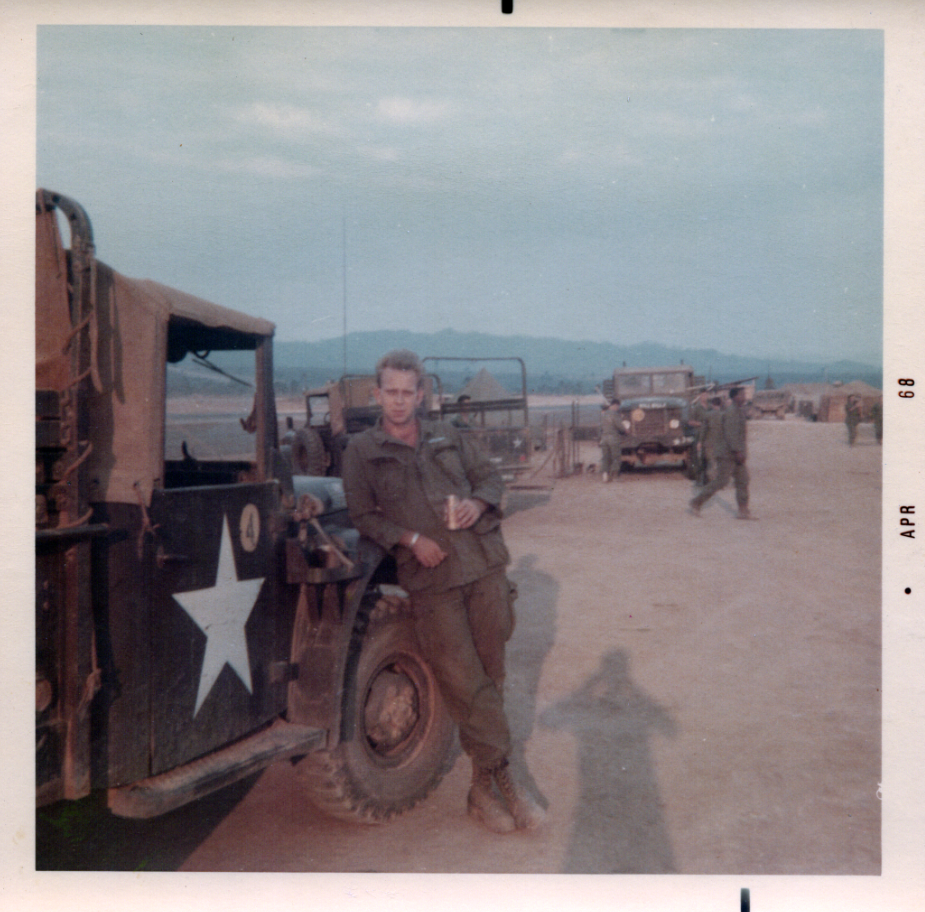
Mac, along with many of the other men wounded during those first weeks of November, would be evacuated from the field to medical facilities east of Dak To. It took a bit for him to recover. Being right handed, he had to adjust to life without the end of his third digit. Mac spent all of the rest of November and half of December waiting for his finger to heal and waiting for the Army to decide if he was still “field worthy”. On December 13th the Army declared him fit for duty, and he began his return to Delta Company. As luck would have it, Mac was given a job in the forward supply section for the company. His duties would keep him out of the field, but not entirely out of danger. Dak To was mortared and rocketed frequently, and his occasional trips to Camp Enari far to the south would require him to travel the highly dangerous and frequently mined road connecting the two camps.
Mac served in the supply section from January to June 3rd, 1968. On June 3rd, he made a decision to volunteer to return to the field with Delta Company. His decision was based on the fact that the company had just lost over half its number killed and wounded on May 30th, when the company was partially overrun while manning a mortar base atop Hill 990 west of Dak To. The company needed experienced men in the field, and Mac wanted to help out. He certainly didn’t have to volunteer, and the fact that he did speaks volumes of his character.
Dear Mom,
Larry “Mac” McGee, letter home written on June 3, 1968
You will never guess what I did today. I volunteered to go back to the company. I know you are wondering why I did. Well I just felt like it was something I had to do. Yesterday we got about 40 new men and we are still under strength. With all those new men they need everybody they can get that has some experience.
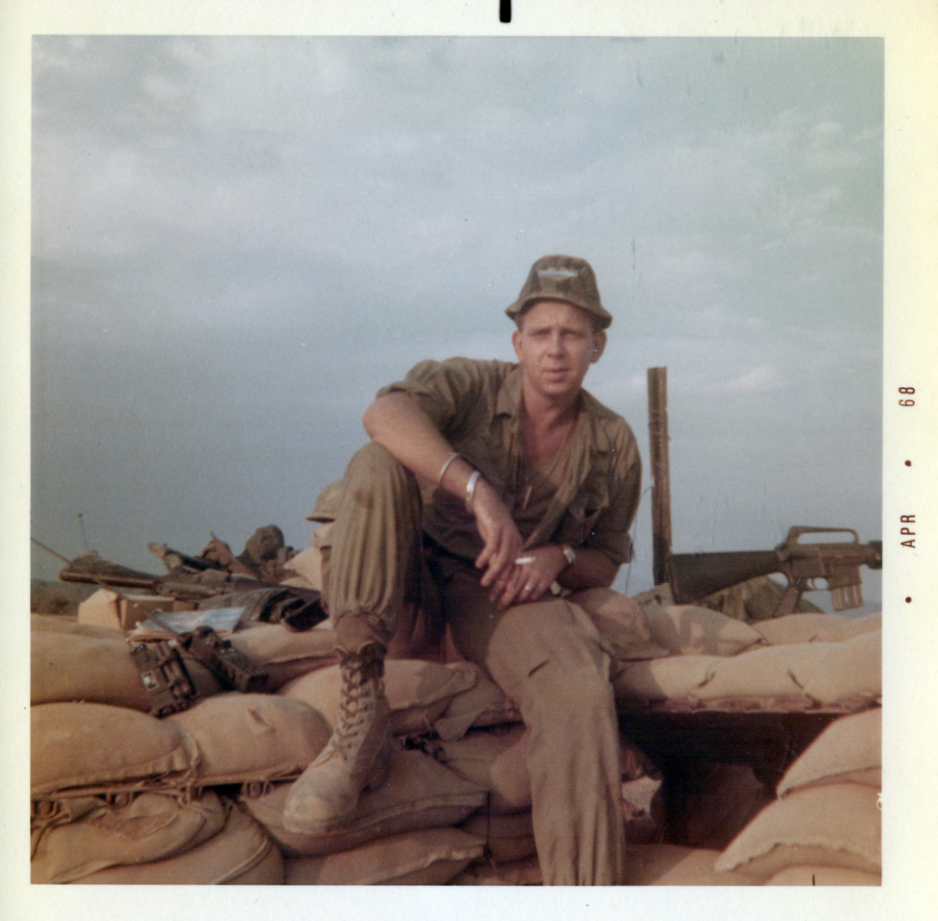
From June 3rd on, Mac was back in the boonies with Delta Company. He was involved in multiple engagements with the enemy during this time. On July 19th, Corporal Melvin Lamar from Hattiesburg, Mississippi was killed by enemy small arms fire near Fire Support Base 29. Lamar carried the highly valuable M-60 machine gun. When Lamar was killed, and his M-60 hit the ground, Mac sprung from his position of cover, sprinted into the open, recovered the gun and began laying down suppressing fire. In a letter home dated July 22, he states, “I was not trying to be a hero, it’s just that we had to have that gun. Or we might have all been hit. Charlie seems to be afraid of our machine guns.”
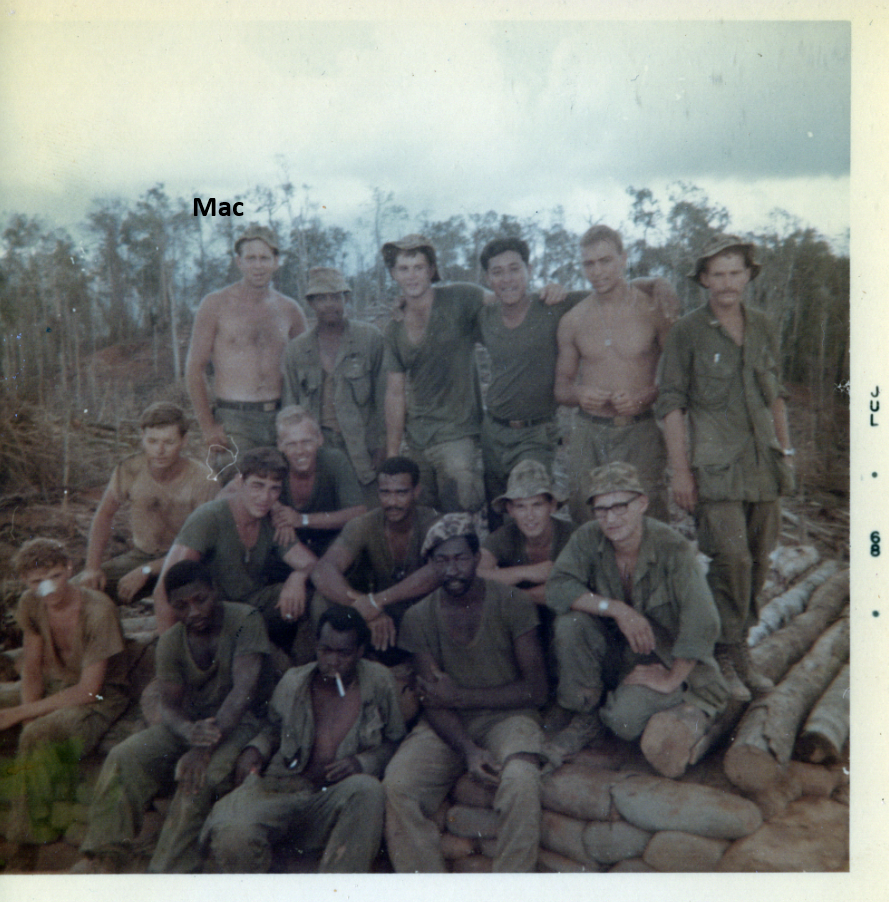
On September 3rd, 1968, from high atop a hilltop north of Dak To, Sergeant Mac, beloved member of Delta Company, stepped aboard a UH-1 Huey helicopter and was flown back to Dak To to begin his long journey back to the United States. His combat tour in Vietnam was over.
During Mac’s time in Vietnam, he took hundreds of pictures, and even recorded nearly 20 minutes of movies shot on his 8mm film camera. For 40+ years, those 8mm filmstrips and his pictures were kept in a shoebox in his home. When Mac passed away in 2010, that shoebox went to his daughter Shannon. When Micah and I met Shannon at a diner in Houston, Texas in 2020, she brought the shoebox. When she told me about the films, my jaw dropped. Who knows what we would find on those. As far as she knew, they had never been watched. In 2022 Shannon brought those 8mm films, old photos and slides to a restoration company in nearby Spring, Texas. Using funds donated to help facilitate my research of the 3-12 Infantry, we paid to have those old memories brought to life. The results were astounding. Beautiful color video of airfield activity around Dak To, including candid scenes of base camp personnel and 3/12 Infantry soldiers returning from the field. Dozens of amazing photos showing the green landscapes around Dak To, more airfield activity and eventually, deeply moving pictures of the harsh and austere conditions faced by Mac and his fellow D Co soldiers. I’ve attached a few of the pictures here, and included links to some of the videos on YouTube. I hope you all enjoy them as much as I do.
